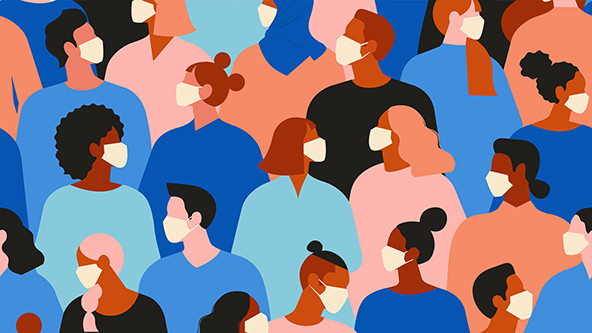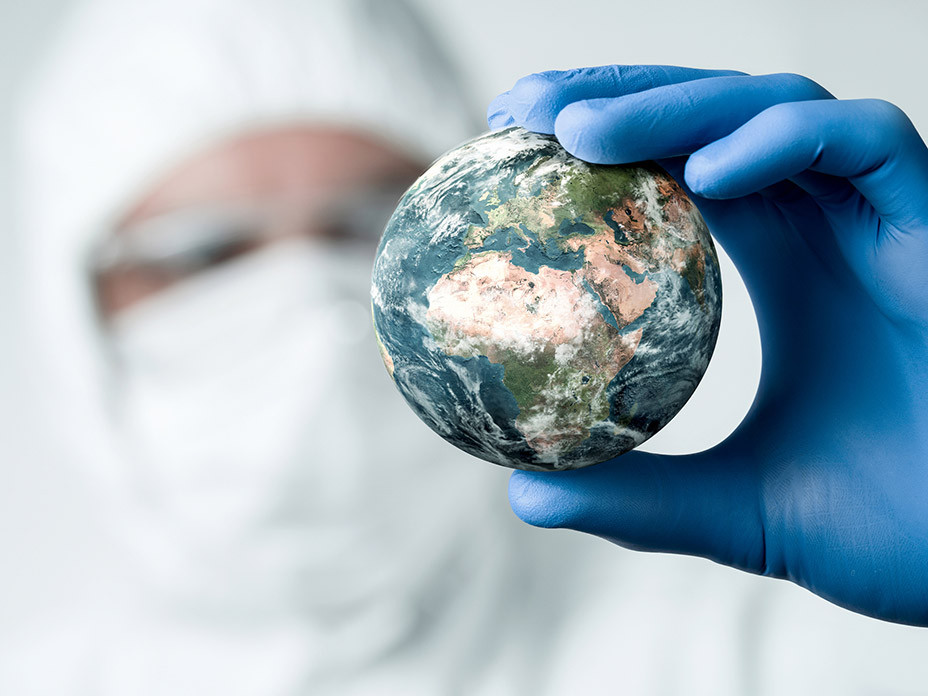 (Illustration by iStock)
(Illustration by iStock)
I don’t know anything about public health. And none of us know what the world is going to look like after COVID-19. Especially as loved ones and people around us get sick.
But we do know that civic health relies on vibrant communities, deep social connections, and face-to-face engagement. Good civic health looks like people making meaningful connections with their neighbors, public officials, and contributing to governance decision-making. Whether breaking bread or debating a local ordinance, our civic life thrives when we’re looking other people in the eyes, hearing their voices, and being in their presence. But given the speed and spread of the novel coronavirus, the basic tenets of how we gather and engage in our civic, social, and communal life are already shifting, at least temporarily, but for now, fundamentally.

If doing our civic duty requires unraveling the very social structures we take for granted in our society, from work to school to leisure, and that traditionally have served as a foundation of civic engagement efforts, what will become of our civic health?
We don’t yet know the answers. But as we physically isolate ourselves, the need for public engagement will simultaneously be at an all-time high, both for public health and democratic health. The health of our communities will depend on individuals taking responsibility to limit the virus’s spread. When schools close and offices go remote, those already most vulnerable in our communities will be most affected, including those structurally and historically marginalized and disenfranchised. Many lower-income children rely on their schools for food and medical care; for seniors, often already insolated, a visit from a social worker might be their only human contact with the outside world. Not all workers can work from home, or use sick days and health insurance if they fall ill. Political, civic, and social engagement will be crucial to help address all of these threats.
What does that civic engagement and healthy democracy look like at a time of anxiety, fear, and social distancing? And where the problem exacerbates existing inequalities, how can democratic engagement respond in an inclusive, accessible, civic-minded, and socially conscious way?
These are some things we can do, but they are not the only things. We don’t yet know what the future will look like. But if these thoughts are only a beginning of a long conversation, we need to start that conversation today. What can we do to keep our civic body healthy?
First, can we embrace technology? Digital tools have not always had the equalizing effect so many of us wished for, from distorting facts to hyper-targeting and tracking, but they can facilitate engagement when we can’t meet in person, and make engagement more accessible to people with varying abilities (even without a pandemic). But how we embrace technology will be key: we must account for gaps in broadband access and digital literacy, of course, and prioritize lightweight, free, reliable, and secure applications.
For example, digital tools require public training on their use, which public schools are particularly well-positioned to provide. PBS is providing free training and resources for teachers and families, especially in California where they are pushing out content on three TV Channels. NewsELA, an expensive, subscription-based reading skills program, just made every teacher account free. Several public schools across the country are equipping students with laptops and tablets, though concerns remain about broadband connectivity across homes. (As such FCC Commissioner Jessica Rosenworcel has implored Internet companies to provide free Wifi as schools close and the FCC has waived the “gift rules” to allow rural hospitals and schools to access broadband). Despite (well-earned) laments about how technology has distorted our democracy, the coronavirus pandemic will be an opportunity to showcase how tech can still be leveraged for social good — if not in the way we previously thought.
Second, can we rethink our traditional structures of power? Many Americans are vulnerable and disenfranchised, and these communities don’t need a health emergency to feel isolated from the very systems of governance, which are supposed to care for them. From domestic workers to those in the gig economy without stable hours or benefits, the prospects of COVID-19 will be devastating. And so, as people stay isolated in their homes, public policy needs to think carefully about the health and care of those making isolation possible, the people doing deliveries, cleaning up hospitals, and providing emergency relief. The work of benefits programs—like Alia by the National Domestic Workers Alliance, which provides benefits for domestic workers, or BenefitKitchen, which helps inform consumers to claim their benefits in health care, nonprofits, retail, and government—will be crucial. But we will need innovations to provide more of a social safety net for people and step in where the government cannot.
Third, while the federal government stalls and adds chaos to crisis, can other branches of government, businesses, and institutions lead the way? Cities can be responsive and transparent in addressing a rapidly growing public health crises, and we can double down on engagement efforts at the local level, getting people engaged in their own communities, making specific asks of their governments, donating to food shelters as they pick up their own supplies, and build networks with neighbors to check in on each other. As Stephen Goldsmith describes in Governing, Seattle has strong local capacity, which is making the city more responsive at isolation and quarantine (Seattle also issued vouchers for food and cleaning supplies, providing $800 to more than 6,00 families). More cities and counties are declaring a state of emergency, which enables more flexibility for people to access benefits such as unemployment insurance. Crisis can also be an opportunity to bring our civic ties into the digital age: Across long-standing digital divides along racial, economic, and generational lines, community boards to library and neighborhood associations must address glaring gaps in tech literacy, access, and training. The Knight Foundation is supporting the Digital Public Library of America to create nation public libraries leaders to advance the use of digital technologies. But now is the moment to make long-term investments to train people to use digital tools for grassroots decision-making. If we seize this moment to invest in the necessary public interest technology to advance civic, social, and communal life, we can emerge a stronger, more vibrant democracy.
Different sectors will have to collaborate and learn from each other. As campuses shut down and learning moves online, universities are developing a template that other sectors of the economy can use, from philanthropies to nonprofits to businesses. Cooperation will be crucial. Philanthropies will need to help nonprofits—especially smaller organizations whose staffs are hunkering down and trying to stay healthy and care for the sick—recoup the many-layered costs of this crisis, from canceled spring fundraisers to major conferences. As stopgap donations will be a matter of survival, the social sector will need to step up and respond to people’s needs. Several foundations, including the Ford Foundation, are providing more flexible grant agreements and allowing organizations to use money for general operating funds. Perhaps this can be a model to continue in the future. Different organizations will have different opportunities amid this crisis: For example, faith-based and counseling organizations will be vital to dealing with elder care as well as depression and domestic abuse challenges that will be exacerbated by social isolation.
Finally, can we re-think our travel-consumption lifestyle? How many times could that meeting be an email? Thinking ahead from today’s crisis to climate change, is there an opportunity for fewer carbon-intensive conferences, events, and convenings? Many NGOs, such as Code For America and Make Sense, have quickly disseminated content to support distributed and remote work. There are digital opportunities for ice-breakers, small group discussions and white boarding sessions. With so much knowledge already present, there is an opportunity to leverage learnings and best practices. In-person gatherings can sometimes be irreplaceable ... but not always. We need to lead the way in adopting and perfecting digital workshop and deliberation tools now in the hope that others will follow.
The New Normal Is Now
There are so many unknowns: precisely how this disease will spread, the impact of social distancing, and how to really tap into our individual humanity for the greater good of society. Fear and anxiety can stoke the worst in humanity. But we need to tap into our empathy, compassion, and humility. We each need to lead by example in our home, families, workplace, and community. It will be an opportunity for the social sector to show by example and demonstrate leadership. Now is the movement to establish new, more inclusive norms.
One of the strange features of this precarious moment is that loving thy neighbor as thyself means avoiding your neighbors in person. But if we act now to help each other weather the crisis ahead—not only as health professionals and patients, but as community members and neighbors—we can emerge from social isolation civically stronger.
Support SSIR’s coverage of cross-sector solutions to global challenges.
Help us further the reach of innovative ideas. Donate today.
Read more stories by Hollie Russon Gilman.

